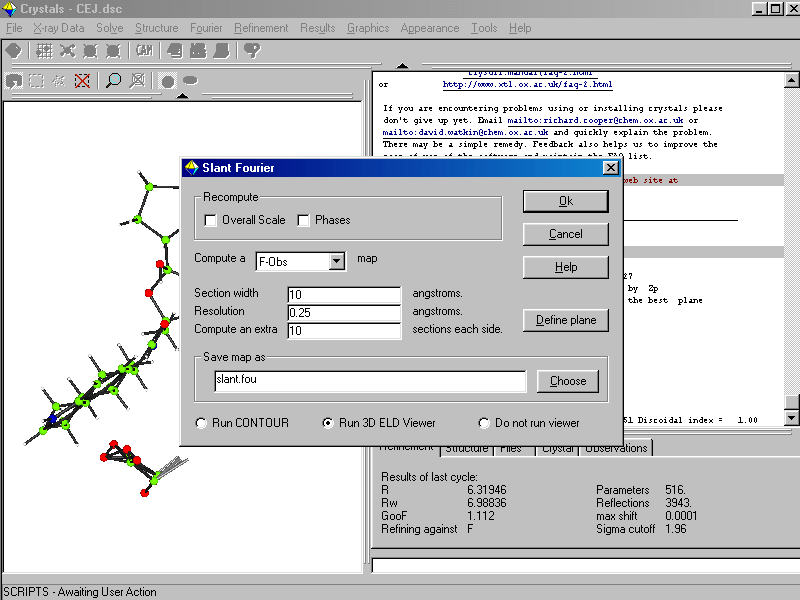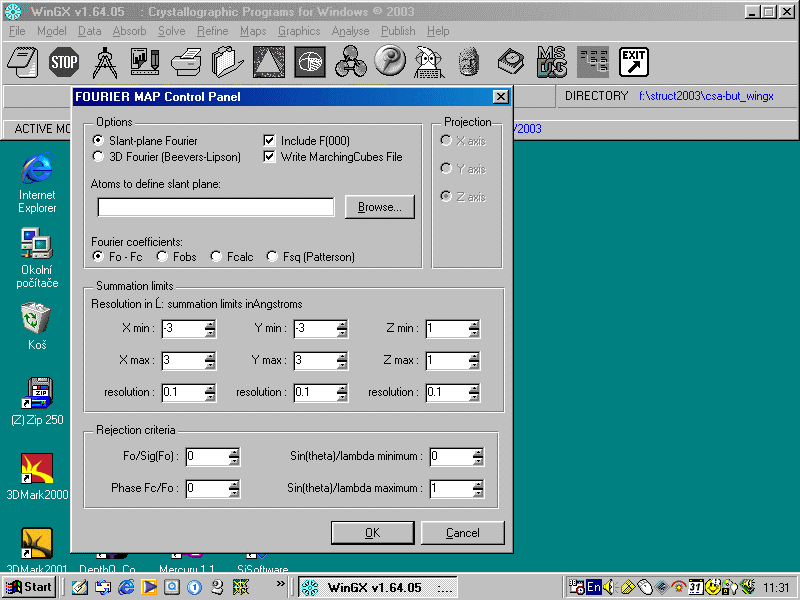23.9.2003 Corrected the link for VB beta 7 version download
30.7.2003 MCE MFC updated to version 1.25 (debugged bonds drawing), MCE_CAVE for PC and IRIX made public for download
31.3.2003 MCE MFC updated to version 1.24. POVRAY support, several bugs handled, better CRYSTALS script added ...
31.1.2003 Updated MCE MFC version to 1.17 (handled bug in image save, background color setup added, CRYSTALS configuration scripts added)
23.12.2002 Released first MFC based version of MCE code. WWW redesigned into 3 section supporting the MFC, Visual Basic and Virtual Reality version of the code ....
11.12.2001 MCE VR ver 11 - a virtual reality version added for download.
20.11.2001 See the comments for proper use of beta 7 (the , versus . problem)
15.5.2001 Experimental port of this code for Linux
and SGI based on GLUT library is available.
E-mail the author for details. The work on a
version for the CAVE virtual reality device have started
in cooperation with J. Keppler university Linz.
10.1.2001 The work on this project is now supported
by the grant number 203/01/0700 Grant Agency of Czech Republic
All programs are able to read the result of Oxford
CRYSTALS package slant fourier map and voids map calculation. The old
Visual Basic version of MCE should be installed in C:\Program Files
for automatic integration into CRYSTALS environment. The path for MCE access
are located in following CRYSTALS scripts: slant.scp vcont.scp and xcont.scp.
If you want to integrate the latest MFC/MCE version into CRYSTALS environment,
place its files to MCE crystals subdiretory (typically C:\Wincrys\MCE)
and replace the three scripts in Wincrys\Script by the version from MCE
distribution. After correct installation , you will be able to directly
launch MCE by the help of "Run 3D ELD Viewer" from the CRYSTALS Fourier
map and Voids map menu:

SHELX/WinGX
The WinGX program is necessary for using the MCE with SHELXS. WinGX will prepare the correct ASCII input for MCE from the Maps->FOURIER MAP menu. You must download WinGX 1.62 beta version or higher. Proper export into a MCE compatible file (file with the .fou extension) could be achieved by checking the "Write MarchingCubes File" option on the Fourier map export panel. The result could be than opened by all MCE version:

GSAS
The latest version of MCE MFC (1.26) supports input from GSAS
.GRD files. See GSAS
manual for details.
Under development are following capabilities (ordered by priority):
1) Implementing in the MFC version all the futures supported by the
old Visaul Basic version
2) Implementation of space group based atom generation in the code.
3) Toning the SGI version for CAVE virtual reality device
4) Support for ELD map walk through by the help of new
generations of Head mounted displays (VFX3D HMD already supported
in the MCE_VR version)
5) Implementation of space group based atom generation in the code.
6) Solid shaded surface visualization.
Let me know if you enjoy this program.
Michal Husak
Department of Solid State Chemistry
Prague Institute of Chemical Technology
Technicka 5
166 28 Prague 6
Czech Republic